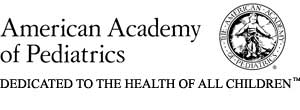

Asthma is a chronic disease of the passageways that carry air to the lungs. These "airways" become narrow and the linings become swollen, irritated and inflamed. In children with asthma, they may be especially sensitive to many irritants, such as viral infections, cigarette and other smoke, cold air, and particles or chemicals in the air. Allergies to dust, animals, pollens and molds can also cause asthma.
The narrowing and inflammation of the airways cause labored breathing, coughing, feelings of chest tightness and shortness of breath. Cough may be the first and sometimes the only symptom of early asthma. Other asthma symptoms are wheezing, fast breathing, or difficult breathing that uses extra muscles from the neck, abdomen and chest to help "draw in" air. Symptoms of asthma can be different for each person, depending on how often they occur or how much or how fast the airways become narrowed. Some children have symptoms of asthma most days and may have to take daily medication; others just may need medication when they have asthma symptoms.
Your child's pediatrician can help you and your child understand what asthma is, and how to prevent symptoms as well as treat them. Prevention and early treatment of asthma may help reduce the number of days your child is absent from school or in the hospital. Controlling the symptoms of asthma will help your child to feel good, run and play, and take part in sports and other physical activities. Your pediatrician will help you recognize what triggers your child's asthma so that you and your child can reduce or eliminate asthma attacks.
Be sure to ask your pediatrician for an asthma action plan that includes advice about the following:
One way to prevent or decrease asthma symptoms is to know when your child isn't getting air in the lungs. You can measure the amount of air your child can breathe in and out with the use of a simple device called a peak flow meter. The peak flow meter will help you measure the flow of air from the lungs so that you can recognize if the airway is narrowing. Peak flow rate measurements can usually be used for children older than 5 to 6 years. Your pediatrician can show you and your child how to use a peak flow meter and how to find out your child's "personal best" peak flow rate. You can then use this peak flow rate to determine when your child's asthma is getting worse and when the treatment is working.
The recommendations in this statement do not indicate an exclusive course of treatment or serve as a standard of medical care. Variations, taking into account individual circumstances, may be appropriate.